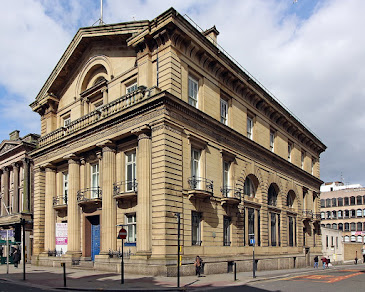Economists tend to be enamoured of the benefits of one of the basic functions of private banks, namely “borrow short and lend long” or “maturity transformation” (MT) as it’s sometimes known. The alleged benefit is that it creates liquidity / money, which is stimulatory.
Unfortunately as Douglas Diamond and Raghuram Rajan say in the abstract of a paper of theirs, and in reference to that liquidity / money creation, “We show the bank has to have a fragile capital structure, subject to bank runs, in order to perform these functions.” (NBER Working Paper No. 7430).
Douglas Diamond has been cite thousands of times in economics literature: yes that’s thousands, not hundreds. So he’s presumably some sort of authority on the subject.
Even more ridiculous is the fact that central banks can and do create money / liquidity on a large scale and without the latter risks.
In other words, and to put it more bluntly, MT is the basic explanation for the hundreds of bank failures that have taken place thru history, and the explanation for the 2007/8 bank crisis.
Or to put it even more bluntly, we incur the risk of tens of millions being thrown out of work, tens of thousands being thrown out of their homes and ten year long recessions just to enable private banks to perform a function in a very risky manner which can perfectly well be performed, and is already being performed by central banks without any of the latter risks.
The words stark, raving and bonkers spring to mind.
But (and this may be hard to believe) that’s not the end of the absurdities of our existing banking set up. Another absurdity is that the need for the latter central bank money creation derives to a significant extent from the chaotic nature of private bank money creation: that is, private banks tend to create and lend out more money in a boom: just when extra stimulus is not needed. Then come a recession, they do the opposite, i.e. call in loans and destroy money / liquidity: again, exactly what is not needed. I.e. private banks act in a “pro cyclical” manner. Thus central banks have to act in a counter cyclical manner so as to deal with the latter chaos.
I’m not objecting here to private money creation where the relevant risks are openly declared. E.g. if I pay someone for something with an IOU scribbled on the back of an envelope (a very poor form of money, of course) the risks are obvious to the person concerned. Moreover, that form of money is unlikely to ever become all that popular because of its obvious drawbacks.
It’s state support for “MT dodgy money” which is wrong – and states (aka taxpayers) do in fact support “MT dodgy money” via deposit insurance and bank bail outs.
Put another way, states create money in two quite different ways. First there is bog standard base money creation by central banks (e.g. to enable them to do QE). Second, they create money in that they support private money creation. And that is a clear case of duplication of effort.
I’m looking forward to hearing a justification for that duplication of effort from supporters of the existing bank system. But I don’t seriously expect to hear anything intelligent or coherent.
There is a more detailed version of the above article (about four times the length). If it seems to take a long time to down load, don't be put off: it takes about 30 seconds with my PC and internet connection.

Central banks create paper wealth when they create money. Do they expect an increase in real wealth to follow?
ReplyDeletePrivate banks create 'on-deposit-money' when they lend wealth. In general, they expect loaned wealth to be used to buy real wealth but that action leaves 'on-deposit-money' floating around.
The problem is that no one can distinguish between 'on-deposit-money' and original CB created wealth. We can only observe a paper trail.
Maybe we should just think of private banks as controlled extensions of the CBs.